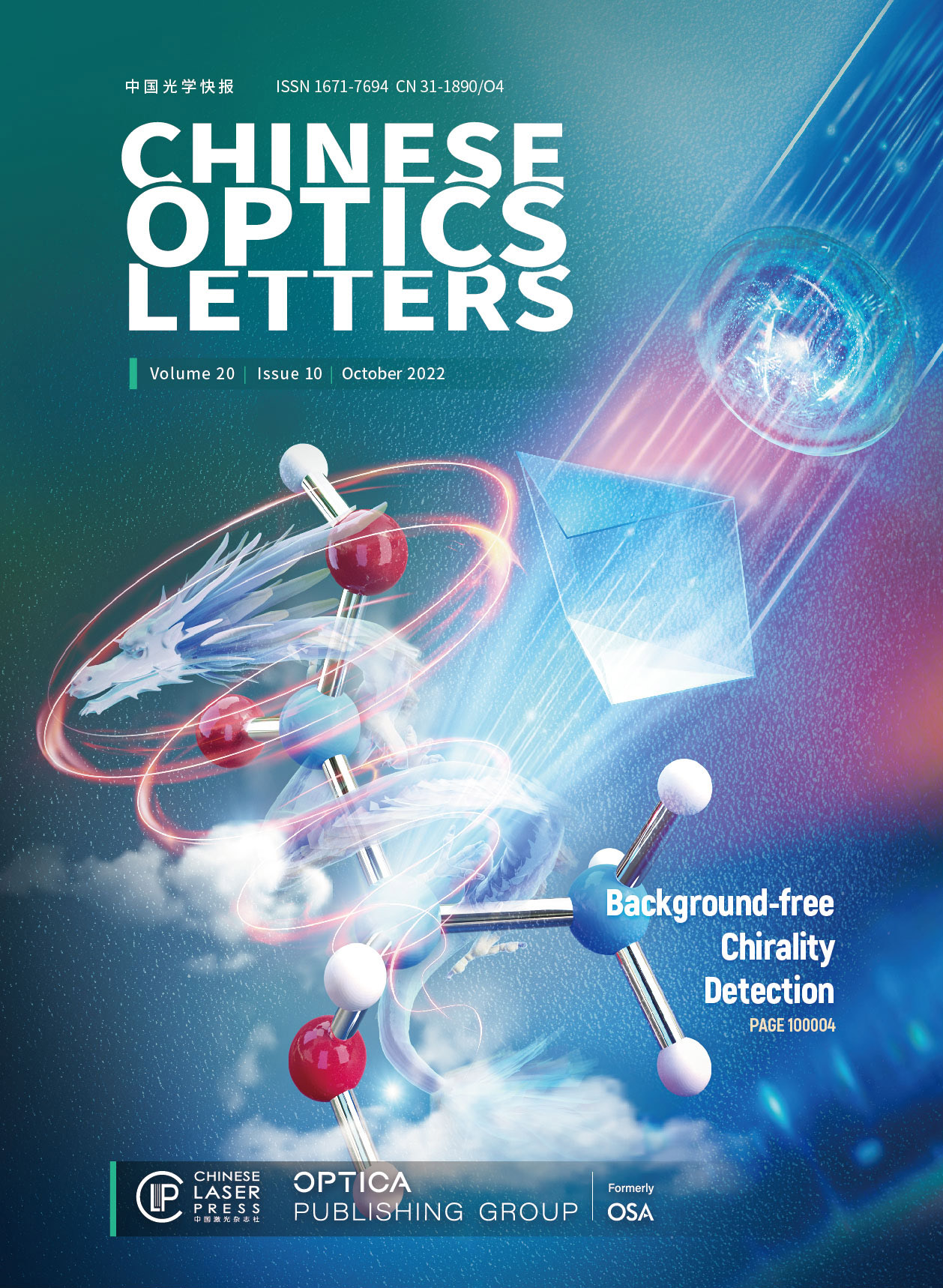Journals >Chinese Optics Letters
- Publication Date: Oct. 14, 2022
- Vol. 20, Issue 10, 100001 (2022)
- Publication Date: Aug. 03, 2022
- Vol. 20, Issue 10, 100002 (2022)
- Publication Date: Aug. 28, 2022
- Vol. 20, Issue 10, 100003 (2022)
- Publication Date: Sep. 09, 2022
- Vol. 20, Issue 10, 100004 (2022)
- Publication Date: Aug. 30, 2022
- Vol. 20, Issue 10, 100005 (2022)
- Publication Date: Oct. 12, 2022
- Vol. 20, Issue 10, 100006 (2022)
- Publication Date: Sep. 22, 2022
- Vol. 20, Issue 10, 100007 (2022)
This study shows the unexpected and counterintuitive possibility of simultaneously orienting a molecule while delocalizing its molecular axis in a plane in field-free conditions. The corresponding quantum states are characterized, and different control strategies using shaped terahertz (THz) laser pulses are proposed to reach such states at zero and nonzero temperatures. The robustness against temperature effects of a simple control procedure combining a laser and a THz pulse is shown. Such control strategies can be applied not only to linear molecules but also to symmetric top molecules.
.- Publication Date: Oct. 20, 2022
- Vol. 20, Issue 10, 100008 (2022)
- Publication Date: Oct. 08, 2022
- Vol. 20, Issue 10, 100009 (2022)
- Publication Date: Oct. 12, 2022
- Vol. 20, Issue 10, 100010 (2022)
- Publication Date: Jun. 25, 2022
- Vol. 20, Issue 10, 100601 (2022)
- Publication Date: Jun. 25, 2022
- Vol. 20, Issue 10, 100602 (2022)
- Publication Date: Jun. 25, 2022
- Vol. 20, Issue 10, 101301 (2022)
- Publication Date: Jun. 25, 2022
- Vol. 20, Issue 10, 103901 (2022)
- Publication Date: Sep. 15, 2022
- Vol. 20, Issue 10, 103601 (2022)
- Publication Date: Jul. 06, 2022
- Vol. 20, Issue 10, 103602 (2022)
About the Cover
The cover shows that a beam focused by a lens and a prism interacts with a chiral molecule. Driven by such a structured beam, the high harmonic spectrum of the chiral system will show unique even harmonics. It offers a background-free and highly sensitive detection scheme of molecular chirality with a simple and compact experimental setup. The dragon hovering over the chiral molecule is a chiral system. And it indicates that the chiral system will stand out from the achiral system and show its uniqueness.






















